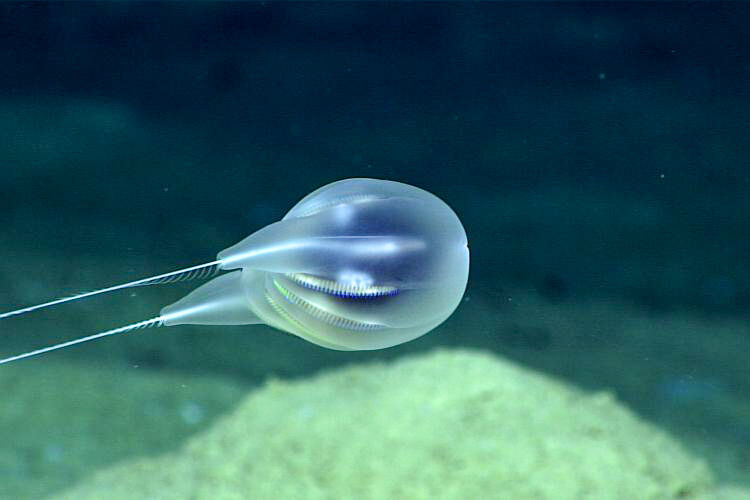The ocean is full of wonders, and scientists are discovering new organisms and new species every year. In recent news, scientists from the National Oceanic and Atmospheric Administration discovered a new species at the bottom of the seafloor off the coast of Puerto Rico.
During an underwater expedition, a research team from NOAA discovered a new species using a new method of research and documentation. Researchers used a virtual method to discover the new species and used a series of undersea video footage to discover the new species.
Scientists from NOAA named the species Duobrachium sparksae. The creature is a new species of ctenophora, more commonly known as comb jellies. Comb jellies are aquatic invertebrates that are known for the cilia (little hairlike structures seen on ctenophores) that help them swim.
According to NOAA’s website, there are 100 to 150 species of comb jellies that have been identified. Comb jellies are carnivores and eat small arthropods. While many of them look very similar to jellyfish, they are not closely related.
Scientists at NOAA used a remotely operated vehicle named Deep Discoverer to capture high-definition video of the new comb jelly back in 2015. This discovery comes as the first time that NOAA scientists have used high-definition video to “describe and annotate a new creature.”
Mike Ford and Allen Collins, two NOAA Fisheries scientists, worked on the team that made the discovery.
“The cameras on the Deep Discoverer robot are able to get high-resolution images and measure structures less than a millimeter,” said Collins. “We don’t have the same microscopes as we would in a lab, but the video can give us enough information to understand the morphology in detail, such as the location of their reproductive parts and other aspects.”
The species was discovered at about 3,900 meters down, which is about 2.5 miles. According to Mike Ford, “It moved like a hot air balloon attached to the seafloor on two lines, maintaining a specific altitude above the seafloor.”
Scientists still do not know a lot about the new species and still do not know what role the species has in the ecosystem.
“The scientists saw the specimens just long enough to get a visual look and describe the species,” according to NOAA Fisheries.
Scientists did not collect a physical sample of D. sparksae due to its gelatinous body not being able to preserve well enough for scientists to bring to the surface and process in time.
The Deep Discoverer collected evidence of three different individuals of the species. All three specimens recorded were seen relatively close to the seabed and a total of three video observations were made by the Deep Discoverer during the research expedition.
Scientists on the research team stated that “video identification [of a new species] can be controversial. . . For example, some insect species descriptions have been done with low-quality imagery and some scientists have said they don’t think that’s a good way of doing things. But for this discovery, we didn’t get any pushback. It was a really good example of how to do it the right way with video.”
The videos discovered by the research team are now part of the Smithsonian National Museum of Natural History, and are publicly accessible for anyone who would like to view the new species.

